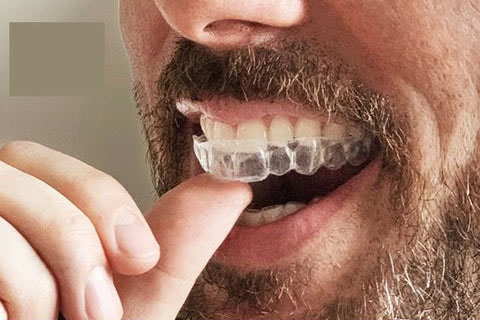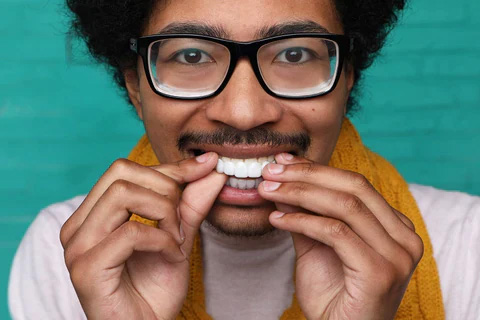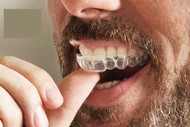What Is Invisalign?
If you're looking for an alternative to traditional braces, Invisalign may be the right choice for you. This computer-generated model uses aligners to realign or repair teeth that are misaligned or uneven, resulting in a beautiful smile.
It's an exceptional solution for adolescents who need the necessary adjustment. Invisalign allows teens to stay on track with their oral health throughout adulthood, while also providing less hassle and more freedom than traditional braces.
Each patient's Invisalign aligners are built to order from FDA-approved, medical-grade plastic. The procedure is often seen to be just as effective as regular braces while also being more convenient. Its plastic trays are easier to clean, and users may remove them more easily to eat, drink, and floss.
In this post, we'll look at what Invisalign is, how it works, and why orthodontists all around the world like it.
How Does Invisalign Work?
Invisalign is a transparent plastic aligner system that fits over the teeth. These aligners are designed to gradually straighten teeth and relocate them into their proper positions. For eating and brushing your teeth, the transparent aligners may be removed like retainers.
An initial examination is performed by a dentist or orthodontist to determine if you are a suitable candidate for Invisalign or if traditional braces with wire and bracket appliances fitted to the teeth would be a better option for you.
If Invisalign is a suitable fit for you, your provider will produce a 3D picture of your mouth with a computer scanner and devise a treatment plan. The picture is used to construct a set of transparent aligners that slowly shift your teeth into the correct position. Each aligner is customized to you and your goals.
As you advance through the aligners, your dentist or orthodontist will analyze tooth mobility and detect any problems before they emerge.
The aligners function by gently but consistently providing pressure to the teeth. You may also require particular attachments to wear under your aligner, depending on the severity of your problem.
Treatment necessitates regular communication with your doctor. Before moving to the next aligner, you wear each one for the appropriate period of time (typically approximately 2 weeks). Your dentist or orthodontist will check your progress on a regular basis to ensure that your teeth are shifting as they should.
You'll be given retainers at the end of your treatment to help safeguard the outcomes of your Invisalign clear aligner treatment.

How Long Does Invisalign Treatment Take?
The length of therapy is determined by the patient's needs, the treatment plan, and how closely you adhere to the treatment plan. Aside from the cost, Invisalign isn't for everyone because of its time commitment. The aligners should be worn between 20 and 22 hours per day. To eat and drink, you must remove them.
Treatment times for Invisalign range from 6 to 30 months, depending on your situation and condition. To evaluate your treatment and how long it will take, your orthodontist will conduct a complete evaluation utilizing x-rays and/or 3D imaging.
A combination of braces and Invisalign aligners may be required for individuals with multiple conditions or more severe misalignment to achieve the greatest results.

How Much Does Invisalign Cost?
Depending on the severity of the condition and where you seek treatment, Invisalign costs range from $1,900 to $9,500. A teenager's average cost is $3,000 per year. A "complete" therapy for an average adult would cost $5,800.
Traditional wire-and-bracket braces cost between $3,000 and $7,500 on average. So, depending on your unique demands and treatment plan, the cost of Invisalign may or may not be the same as the cost of conventional braces.
Does Insurance Cover Invisalign?
If your dental insurance covers Invisalign, your provider may pay for part or all of the cost. However, most plans have limited orthodontic coverage and you will likely need to pay something out-of-pocket.

What Are the Benefits of Invisalign?
As an alternative to conventional braces, Invisalign was developed. It has effectively removed all of the disadvantages of metal braces. Among the several benefits are:
1. Almost Imperceptible
Many are virtually entirely blind to the transparent aligners. They are comfortable to wear and have no effect on your voice. Many patients prefer this over the appearance of metal braces.
2. Removable
You can remove your aligners to eat or brush your teeth, and there's no limit to what you can eat like with traditional braces. You also don't need to adjust your brushing habits or flossing routine.
3. Comfortable
The aligners are composed of smooth plastic that will not hurt your lips or cheeks. They are less painful and move your teeth more softly than traditional braces.
4. Convenient
With Invisalign, you won't have to see your dentist or orthodontist as frequently. A visit every 6-8 weeks is generally enough for the length of your therapy.
One more perk of Invisalign is that you can find it at many different dental clinics. You don't need an orthodontist because a computer program takes care of most of the work.

Frequently Asked Questions (FAQs)
1. What Can Invisalign Treat?
Invisalign's applications were initially restricted. However, with advancements in technology, transparent aligners may now cure a wide spectrum of disorders.
Invisalign treatment can address a variety of issues in both baby and permanent teeth, including overbite, underbite, crossbite, open bites, gap teeth, general straightening, and certain bite abnormalities (malocclusions), and so on.
2. What Are Invisalign Teen & Express Treatments?
Depending on the patient and their diagnosis, Invisalign therapy offers a number of options. Invisalign Teen treatment is a specialist Invisalign clear aligner treatment program created specifically for teens' developing mouths.
For individuals with milder problems, Invisalign Express is a shorter-term treatment option. This can be used for minor spacing or crowding, or as part of a treatment plan that includes both Invisalign and braces.
3. What Are Invisalign Chewies?
Chewing Invisalign chewies, which are formed of a spongy, non-edible substance, improves the fit of your aligners. They come in tiny rolls that may be reused several times before being discarded. To get the greatest results with your aligners, chew them for 5-10 minutes every day.
4. Does Invisalign Treatment Hurt?
Treatment with Invisalign is completely painless! The removers are constructed of soft, flexible SmartTrack plastic with a professionally engineered scalloped edge for a pleasant, effective fit. SmartForce attachments are constructed of a non-toxic, safe dental glue that is easy to apply and remove.
When you initially start using aligners, you may experience some little pain for the first day or two, but your teeth will rapidly adjust. You may alter the fit of an aligner using a pair of nail clippers or cuticle scissors if the edge bothers your gums.
The Bottom Line
A large smile with straight teeth can noticeably increase a person's happiness and self-esteem, which is important since over 60% of people believe that having straight teeth makes them feel more confident. So why wouldn't you try Invisalign, a procedure that may correct any dental misalignments and give you that wonderful smile?
Cost might be one of those reasons. An alternative to Invisalign with a significantly smaller price tag is Instasmiles. These clip on veneers can cover any gaps, discoloration, and misalignment symptoms instantly. And the best part? You never have to go to the dentist. Take the smile assessment and find out if you're a good candidate for clip ons.


 UK
UK
 USA
USA
 Australia
Australia

